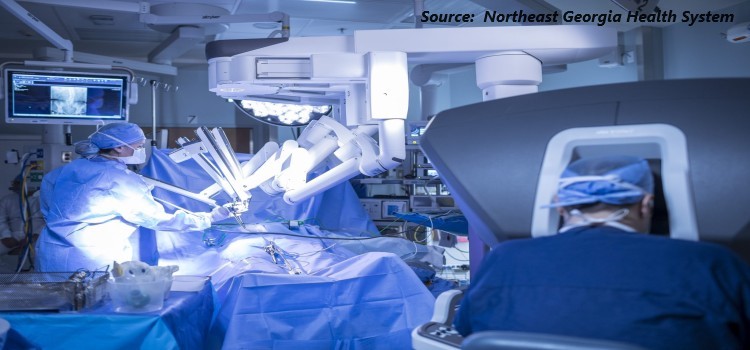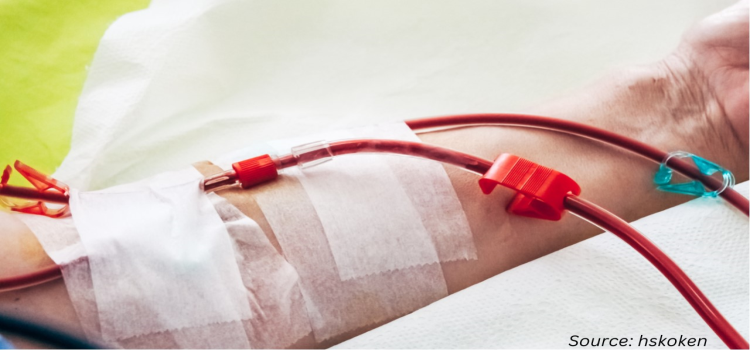
Asia-Pacific Disabled & Elderly Assistive Device Market by Type (Living Aids, Hearing Aids, Mobility Aids, Medical Furniture, and Bathroom Safety Equipment), and by End User (Hospitals, Elderly Nursing Homes, Home Care, and Other End Users) – Opportunity Analysis and Industry Forecast, 2024–2030
Industry: Healthcare | Publish Date: 11-Dec-2023 | No of Pages: 191 | No. of Tables: 140 | No. of Figures: 85 | Format: PDF | Report Code : N/A
Market Definition
Asia-Pacific Disabled & Elderly Assistive Device Market was valued at USD 7.10 billion in 2023, and is predicted to reach USD 10.59 billion by 2030, with a CAGR of 5.6% from 2024 to 2030. The assistive device industry fosters independence and improves the lives of individuals with disabilities and older adults by developing specialized tools and systems. It encompasses a diverse array of devices and software designed to address physical, sensory, cognitive, and developmental limitations.
This industry lies at the intersection of healthcare, technology, and accessibility, giving rise to solutions such as mobility aids, communication devices, and home automation systems. Driven by aging demographics, technological advancements, and regulatory changes, it prioritizes inclusivity and continuously adapts to meet evolving needs.
Rising Aging Population Demographics Creates Demand for Assistive Technology in Asia-Pacific
The global population is experiencing a demographic shift with a significant increase in the proportion of elderly individuals. As people age, they often face challenges in terms of mobility, vision, hearing, and other aspects of daily living. This demographic trend is a key driver for the Disabled and Elderly Assistive Device Market. Assistive devices become essential tools to help seniors maintain their independence, improve their safety, and enhance their overall quality of life.
Products such as mobility aids, hearing aids, vision aids, and home modification tools cater to the specific needs of an aging population, addressing age-related limitations and supporting active aging. Thus, the growing number of elderly individuals worldwide creates a sustained demand for assistive devices, making it a significant factor propelling the market's expansion.
Technological Advancements Transforming the Disabled and Elderly Assistive Device Industry in Asia-Pacific
The Disabled and Elderly Assistive Device Market is undergoing a remarkable transformation fueled by relentless technological advancements. Innovative solutions such as smart home technologies, wearable devices, and robotics are revolutionizing the assistive device landscape. Smart home integration, empowered by voice-activated assistants and automated systems, is breaking down barriers and enhancing accessibility for individuals with mobility limitations. Robotics, encompassing exoskeletons and robotic arms, is providing mobility assistance and support with daily tasks for individuals with impairments.
The customization and connectivity facilitated by advanced technologies ensure that assistive devices can be meticulously tailored to individual needs and seamlessly integrated into broader healthcare systems. These technological breakthroughs not only elevate the functionality of assistive devices but also foster independence and social integration, propelling the market's continuous expansion.
High Cost and Affordability of Assistive Devices Hinders the Market Growth in Asia-Pacific
The financial constraints imposed by high costs often render assistive technologies out of reach for many individuals, particularly those in developing and underdeveloped nations who grapple with low or fixed incomes. This inaccessibility creates a significant barrier for a large segment of the population, hindering their ability to benefit from these life-changing tools. Furthermore, a pervasive lack of awareness among individuals, caregivers, and even healthcare professionals regarding the range and advantages of assistive technologies contributes to their underutilization.
Integration of Future Technologies for the Asia-Pacific Assistive Device Industry
Assistive technology is transforming, becoming more personalized, accessible, and productive. This is due in large part to advancements in artificial intelligence (AI) and machine learning (ML), which are enabling assistive devices to be tailored to individual needs and adapt to changing conditions. The Internet of Things (IoT) and smart home systems are also empowering users to control their environments more independently than before.
Wearable devices and sensors monitor health metrics in real-time, providing valuable insights for self-care and overall well-being. Robotics-powered mobility aids and exoskeletons are augmenting physical capabilities, while augmented reality (AR) and virtual reality (VR) technologies are revolutionizing training and rehabilitation programs. These groundbreaking innovations are reshaping the assistive technology industry, expanding the range and efficacy of solutions while making them more accessible to those who need them.
Japan Holds the Dominant Market Share in Asia-Pacific Market
Japan is experiencing a significant demographic shift as its population ages, which is a critical driving factor for the disabled and elderly assistive device industry. The country's birth rates have been declining while life expectancy has been increasing, leading to a larger proportion of elderly individuals in the population. This demographic change has created a growing demand for assistive devices catering to the aging population's unique needs.
Governments in Japan are stepping up their support for older adults, propelling the growth of the assistive device industry catering to the disabled and elderly. Recognizing the crucial role of comprehensive care and support for their aging populations, governments are placing greater emphasis on developing and utilizing assistive technologies tailored to the specific needs of older adults.
Australia to Witness Substantial Growth in the Asia-Pacific Market
Australia's assistive device industry is thriving on the adoption technological innovation. These advancements are revolutionizing the sector by introducing groundbreaking solutions that improve the lives of people with disabilities and the elderly. From state-of-the-art robotics that aid with mobility to personalized wearable devices that track health metrics, technology is a driving force behind the development of ground-breaking assistive devices. Advancements such as 3D printing, enabled the creation of customized prosthetics and orthopedic aids, ensuring a better fit and improved functionality. This level of personalization allows for a more comfortable and effective experience for users, enhancing their quality of life.
Government support is a pivotal driving factor behind the growth of the disabled and elderly assistive device industry in Australia. At the forefront of this support is the National Disability Insurance Scheme (NDIS), a groundbreaking program that extends financial aid and services to individuals with disabilities. The NDIS plays a crucial role in increasing accessibility to assistive devices such as mobility aids and communication tools, enhancing the quality of life and independence of the disabled population. Additionally, the Australian government allocates funding for aged care services, recognizing the needs of the elderly. This funding ensures that the elderly receive necessary assistive devices, enabling them to age with dignity and maintain their independence.
Competitive Landscape
Various market players operating in the Asia-Pacific disabled & elderly assistive device market include Invacare Corporation, Sunrise Medical LLC, Bausch & Lomb, Inc., Permobil AB, Siemens Healthcare, Freedom Scientific, Inc., William Demant Holding A/S, Starkey Hearing Technologies, GN ReSound Group, Ai Squared, Blue Chip Medical Products, Inc., MED-EL, Liberator Ltd., Drive Medical Design and Manufacturing, Exact Dynamics B.V., and others.
Asia-Pacific Disabled & Elderly Assistive Device Key Market Segments
By Type
-
Living Aids
-
Hearing Aids
-
Behind-the-ear Aids (BTE)
-
Receiver-in-the-Ear Aids (RITE)
-
In-the-Ear Aids (ITE)
-
Bone Anchored Hearing Aids (BAHA)
-
Canal Hearing Aids
-
Cochlear Implants
-
Reading and Vision Aids
-
Braille Translators
-
Video Magnifiers
-
Reading Machines
-
Others
-
-
Mobility Aids
-
Walkers & Rollators
-
Canes & Walking Sticks
-
Crutches
-
Transfer Lifts or Patient Mechanical Lift Handling
-
Door Openers
-
Others
-
-
Medical Furniture
-
Medical Beds
-
Door Openers
-
Medical Furniture Accessories
-
Riser Reclining Chairs
-
Others
-
-
Bathroom Safety Equipment
-
Shower Chairs
-
Commodes
-
Ostomy Products
-
Bars, Grips, & Rails
-
By End User
-
Hospitals
-
Elderly Nursing Homes
-
Home Care
-
Other End Users
By Region
-
Asia-Pacific
-
Australia
-
China
-
India
-
Japan
-
Rest of Asia-Pacific
-
REPORT SCOPE AND SEGMENTATION:
|
Parameters |
Details |
|
Market Size in 2023 |
USD 7.10 Billion |
|
Revenue Forecast in 2030 |
USD 10.59 Billion |
|
Growth Rate |
CAGR of 5.6% from 2024 to 2030 |
|
Analysis Period |
2023–2030 |
|
Base Year Considered |
2023 |
|
Forecast Period |
2024–2030 |
|
Market Size Estimation |
Billion (USD) |
|
Growth Factors |
Urbanization and its impact on the disabled and elderly assistive device industry Technological advancements transforming the disabled and elderly assistive device industry |
|
Countries Covered |
4 |
|
Companies Profiled |
15 |
|
Market Share |
Available for 10 companies |
|
Customization Scope |
Free customization (equivalent up to 80 working hours of analysts) after purchase. Addition or alteration to country, regional, and segment scope. |
|
Pricing and Purchase Options |
Avail customized purchase options to meet your exact research needs. |
KEY PLAYERS
-
Invacare Corporation
-
Sunrise Medical LLC
-
Bausch & Lomb, Inc.
-
Permobil AB
-
Siemens Healthcare
-
Freedom Scientific, Inc.
-
William Demant Holding A/S
-
Starkey Hearing Technologies
-
GN ReSound Group
-
Ai Squared
-
Blue Chip Medical Products, Inc.
-
MED-EL
-
Liberator Ltd.
-
Drive Medical Design and Manufacturing
-
Exact Dynamics B.V.




 Speak to Our Analyst
Speak to Our Analyst


































